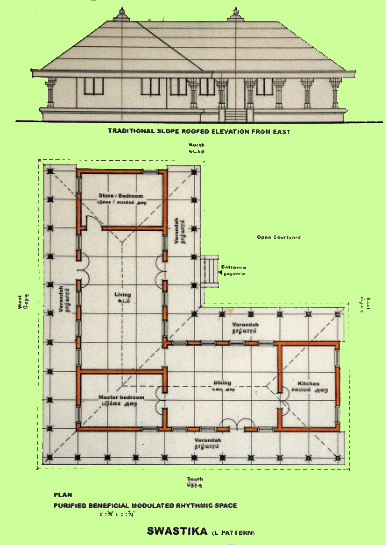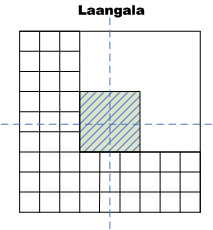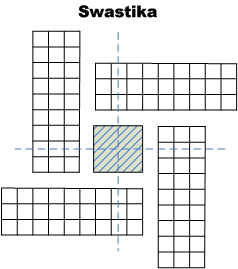Green Design
Building’s Healing Properties
Dr. Sthapati mentioned in his “Final Say In The Matter”, that “the Celestial Space turns into Earthly Space, which in turn is responsible for good and bad that we happen to face in the mundane world.” The holistic approach of Vaastu lies in the ability to eliminate the negative effects of the encapsulated space and bring to balance human energy in such a building. What could be greener than this? As we can see, Vaastu is a therapeutic architecture

Copyright © Olga Sokolova
Vaastu commercial and residential buildings are custom-made structures for specific locations, organizations or families. They are perfectly tuned, not only with the environment, but also with the energy of the inhabitants. Human energy is vibrating in unison, or resonating with the energy of the building; therefore, inhabitants become peaceful, happy and even healthier. All these will lead to a prosperous and happy life in general and also, of course, to energy preservation.
So, a Vaastu building will bring the inhabitants:
- Health
- Happiness
- Prosperity
- Spiritual Bliss
Most people would say about their houses, “it just feels good!”

Designed by Dr. V. Ganapati Sthapati and Associates. (it is his floor plan)
Green Architecture and Urbanism are linked to Green Vaastu

Vaastu Layouts
Residential Design
Dandaka and Laangla |
|
 |
| Moulika and Chaturmukha |
|
 |
| Swastika |
|
 |
Diagrams created by Olga Mandodari Sokolova
“… and holisticsolutions must embrace poverty, health and underdevelopment as well as ecology and environment.” was pointed out at Green Architecture & Urbanism Council (CNU) held in Alexandria, VA from November 29 th through December 2 nd of 2007.
Vaastu Shastra gives a full scale of rules for urban development to make it really Green. Per these ancient teachings, the grid of a future city should be overlaid on the energy grid of Earth, which is Vaastu Purusha Mandala. In simple words, the grid of the city should be aligned with the Earth’s conduits of life energy or cardinal directions (N, E, S, W).
Every concentric belt has its own vibration and inherent property. Therefore, during ancient times people were placed into a specific concentric belt based on what they do.
For example:
The Center is Brahmasthan , which is unobstructed.
The First Concentric Belt, starting from the center of the city grid, was called Brahma Pada and was for the intellectual class.
Second Concentric Belt
The next concentric belt was Deivika Pada and was for the ruling class.
Third Concentric Belt
The next concentric belt was Maanusha Pada was for the business class.
Fourth Concentric Belt
The next concentric belt was Paisachika Pada was for the working class.
Now, these zones can be divided starting from the outside concentric belt toward center:
- Occupational zone
- Entertainment zone
- Commercial zone
- Residential zone
- Educational zone
- Brahmasthan
Green Architecture, Space planning of the built space, and an interior functionality is also based on the same rules of Vaastu Purusha Mandala and its properties.
|